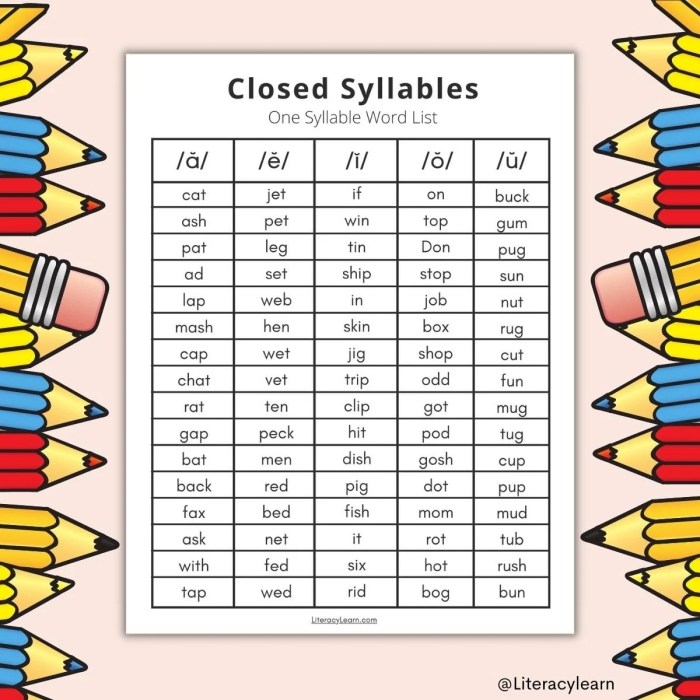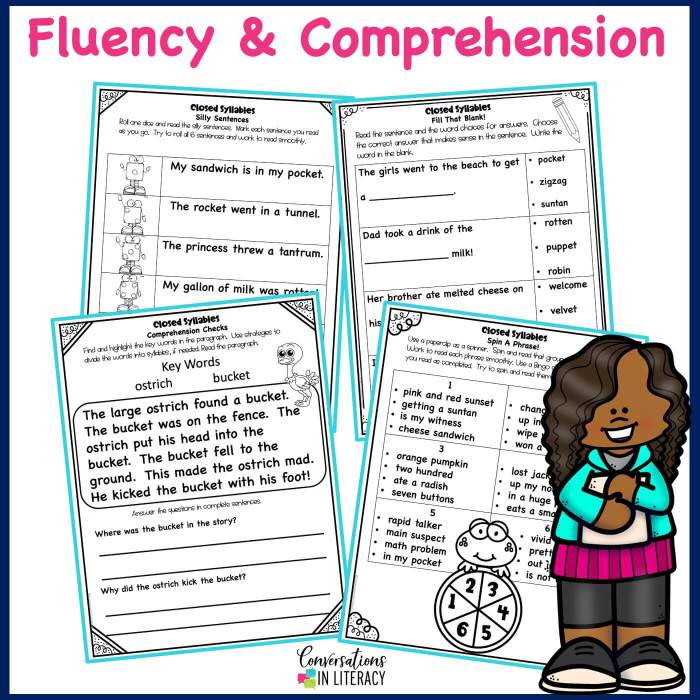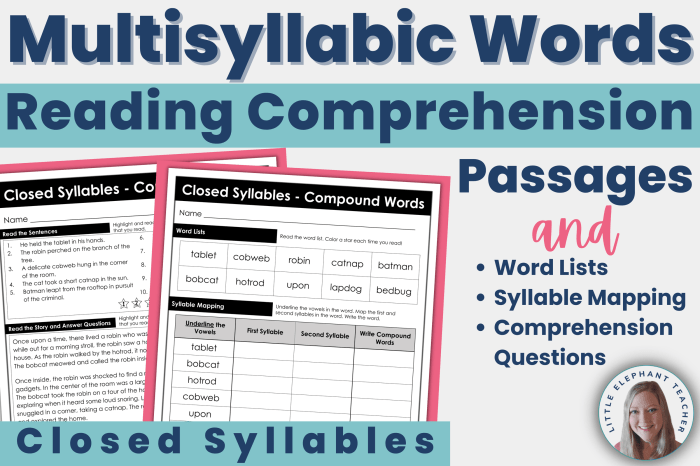Multisyllabic words with closed syllables, characterized by their distinctive pronunciation and spelling patterns, hold immense significance in language development and communication. This exploration delves into the intricacies of these words, uncovering their types, pronunciation rules, and educational implications, promising a comprehensive understanding for both language enthusiasts and educators.
Definition of Multisyllabic Words with Closed Syllables

Multisyllabic words are words that have more than one syllable. Closed syllables occur when a word ends in a consonant sound, creating a distinct break in the pronunciation. In contrast, open syllables end in a vowel sound, allowing the sound to flow smoothly.
Types of Multisyllabic Words with Closed Syllables
- Disyllabic:Words with two closed syllables, e.g., “bottom,” “rocket”
- Trisyllabic:Words with three closed syllables, e.g., “lantern,” “mountain”
- Polysyllabic:Words with four or more closed syllables, e.g., “fragmentation,” “catastrophe”
Pronunciation and Spelling of Multisyllabic Words with Closed Syllables
Closed syllables are pronounced with a short vowel sound, followed by a consonant sound. This can affect the stress pattern of the word, with the stressed syllable often falling on the syllable before the closed syllable.
Spelling patterns for closed syllables include:
- Consonant-vowel-consonant (CVC), e.g., “cat,” “bed”
- Consonant-vowel-consonant-consonant (CVCC), e.g., “block,” “snap”
FAQ Guide: Multisyllabic Words With Closed Syllables
What is the difference between open and closed syllables?
Open syllables end in a vowel sound, while closed syllables end in a consonant sound.
How do I pronounce words with closed syllables?
In closed syllables, the vowel sound is short and the consonant sound is pronounced clearly.
Why is it important to teach multisyllabic words with closed syllables?
These words are essential for building vocabulary and improving reading comprehension.

